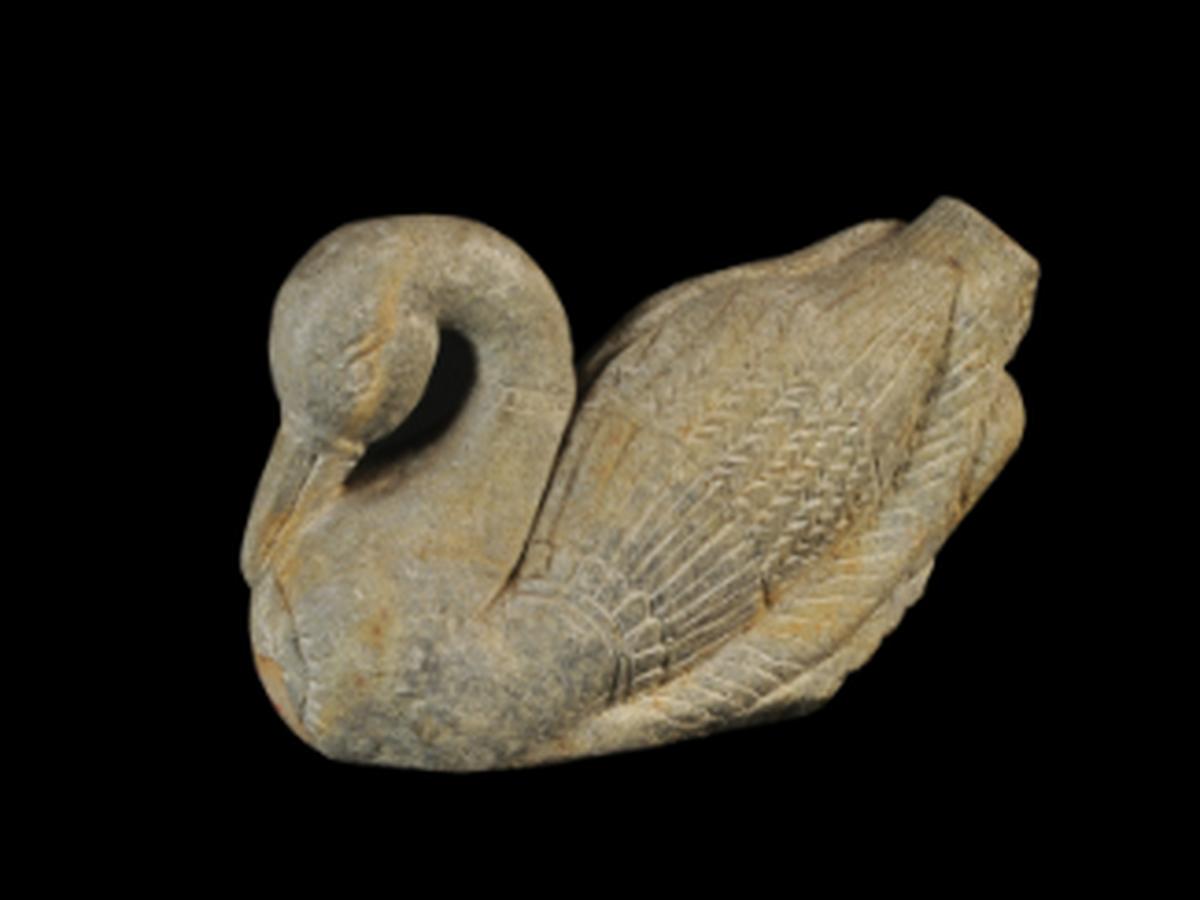State
Tribe Name
Art Type
short description
This beautiful stone carving of a swan belonging to the Santal tribe speaks about the great artistic talent and ingrained cultural attachments of the tribe towards their natural environment. The Santals are that aboriginal community residing mostly in the eastern Indian states like Jharkhand, Odisha, West Bengal and Bihar, which are well known for their expressive art and folk forms ranging from mural and music to wood and stone carving.
Thumbnail

Filter Postion
Left
Filter Background
Off
Theme
Filter Header Image

content
Image

description
This beautiful stone carving of a swan belonging to the Santal tribe speaks about the great artistic talent and ingrained cultural attachments of the tribe towards their natural environment. The Santals are that aboriginal community residing mostly in the eastern Indian states like Jharkhand, Odisha, West Bengal and Bihar, which are well known for their expressive art and folk forms ranging from mural and music to wood and stone carving.
Sculpted from one piece of stone, gracefully curved neck, sharp beak, and two beautifully engraved wings turn this marble piece into sculpture imbued with vigor and life. Elaborate decoration embellishing the body of the swan bears ample testimony to the detail borne by a Santal artist to his symbolic craftsmanship. The sculpture has a flat base, which would lend itself to stable placement, thus suggesting display or even ceremonial use. In Santal: Culture, a bird such as the swan will often symbolize purity, grace, and harmony with the natural world. Such sculptures may find a place in the home, the courtyard, or shrine-not just for beauty but for spiritual ideals as well. The carvings suggest the sculpture was made with painstaking care and reverence with regard to potential use in festive or ritual contexts.
Sculpted from one piece of stone, gracefully curved neck, sharp beak, and two beautifully engraved wings turn this marble piece into sculpture imbued with vigor and life. Elaborate decoration embellishing the body of the swan bears ample testimony to the detail borne by a Santal artist to his symbolic craftsmanship. The sculpture has a flat base, which would lend itself to stable placement, thus suggesting display or even ceremonial use. In Santal: Culture, a bird such as the swan will often symbolize purity, grace, and harmony with the natural world. Such sculptures may find a place in the home, the courtyard, or shrine-not just for beauty but for spiritual ideals as well. The carvings suggest the sculpture was made with painstaking care and reverence with regard to potential use in festive or ritual contexts.
Image Mode
landscape
promoted
On
Verified
Off
